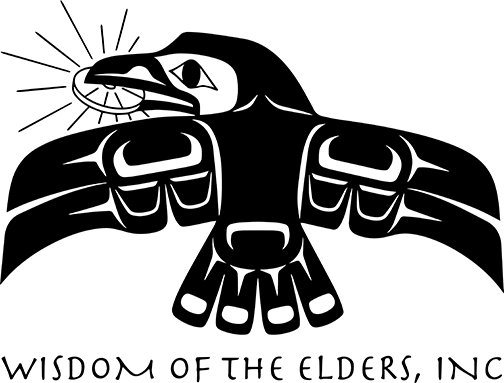The Arikara
with Arlie Neskahi
From the journal of William Clark::
William Clark, October 12 th, 1804. “The Arikaras are about 500 men able to bear arms, and the remains of ten different tribes. reduced by small pox and wars with the Sioux. Their men tall and well-perportioned. Their women small and industrious. They raise great quantities of corn, beans etc. Also tobacco for the men to smoke.. Their houses are close together and towns enclosed with pickets, their lodges are 30 to 40 feet in diameter, covered with earth on neat poles set end wise.”
Arlie Neskahi:
Welcome to Wisdom of the Elders. I’m Arlie Neskahi.
It was October. Ice frosted the trees in the morning. Lewis and Clark pushed up the Missouri, leaving the territory of the Teton Sioux. They approached an island near the mouth of the Grand River covered with fields of corn, beans and squash. Curious people lined the bank. Behind them rose a village of about 60 large earthen lodges. This was the first of the three villages of the Sahnish, or the Arikara.
Most Americans think of the plains Indians as nomadic buffalo hunters, like the Sioux horseman portrayed in our last program. The Arikara, and really the vast majority of the Indians along the Missouri, lived in villages and raised crops. Early in the summer, they would move onto the prairie to hunt buffalo, returning in time for the harvest.
Not thirty years before the Corp of Discovery, the Arikara numbered twenty or thirty thousand and lived in dozens of villages along the Missouri. In the 1780’s, a series of devastating smallpox epidemics raged through the valley, killing tens of thousands of Indians. By 1804, the remnants of the Arikara clustered into what historian James Ronda calls “refugee towns.” Imagine living in a country that suddenly loses seventy five percent of its population, mostly children and elders.
As Lewis and Clark prepared to council with the elders, they knew that the Arikara villages formed one of the most important trading centers in the region. In exchange for Arikara corn and other foods, the Teton Sioux brought manufactured goods from the east. The Cheyenne, Arapaho and other central plains tribes brought buffalo, horses, and goods from the Spanish south.
Virgil Chase:
And when Lewis and Clark and them come on up, they brought liquor to the Indians, you know. We had a chief named Grey Eyes, and he asked, “Why do you call us your friend when you give us this stuff that makes us act foolish.” And that’s been the downfall for our people ever since is alcoholism.
Music:
Traditional Blessing Song
Kenny Scabby Robe, Jr.
Tribute to the Elders
Canyon Records
Neskahi:
The Arikiara position as key Missouri River traders was not to last. Within twenty years, their villages were destroyed in the first incursion of the U.S. Army onto the plains, and they became refugees again, eventually taking up life with the Mandan further up the river.
The Arikara live on the Ft. Berthold Reservation along with the Mandan and Hidatsa tribes. The Grand River village sites visited by Lewis and Clark now are covered by the Oahe Reservoir.
I’m Arlie Nesakhi, and this is Wisdom of the Elders.



